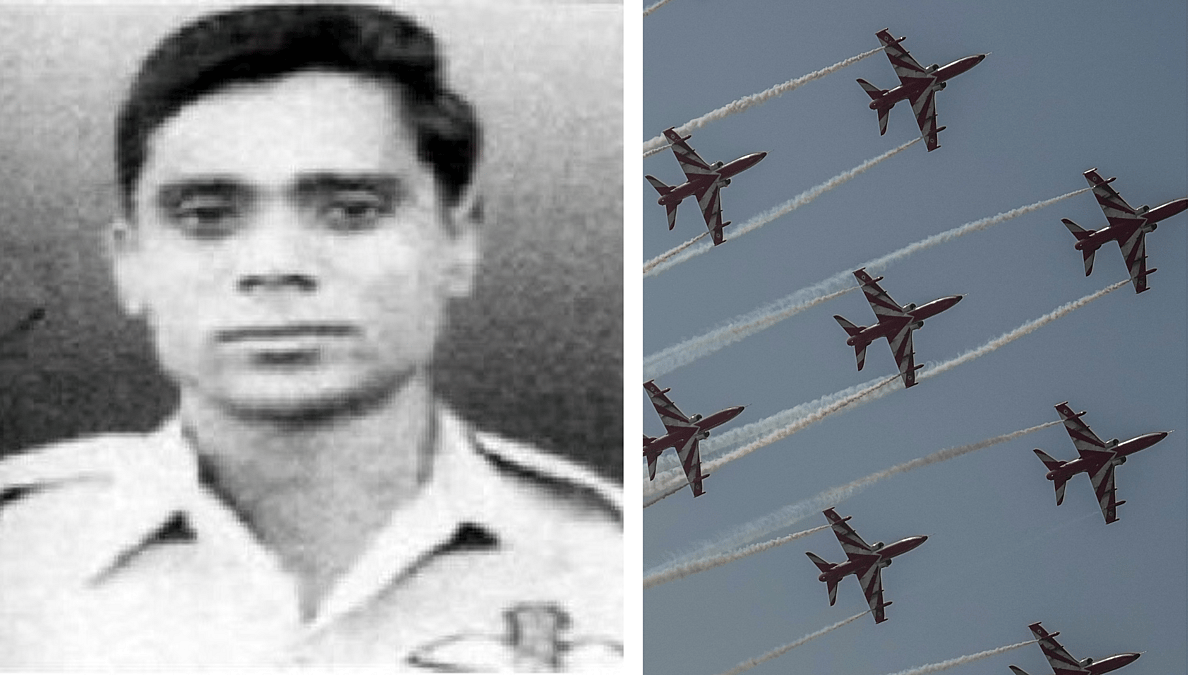Bhopal (Madhya Pradesh): And death shall be no more; Death, thou shalt die — John Donne
“Bombs away. Tejgaon airbase has turned into an inferno. You have done the damage. Time to return,” cried senior officers from the base, coordinating Operation Tejgaon.
The officers were watching the young Flight Lieutenant Shrikrishna Gajanan Khonde raining fire on the heavily guarded East Pakistan’s Tejgaon airbase near Dhaka on December 4, 1971.
Towards midnight on December 3, 1971, the Pakistan Air Force (PAF) struck 11 IAF bases. Fear and anguish permeated across the country. But the IAF planes swung into action on the morning of December 4 to quell the PAF fighters.
Flight Lieutenant Khonde was a member of the 37 Squadron, also called Black Panthers, based at Kalaikunda, Medinipur, West Bengal. His task was to bombard Tejgaon airbase, near Dhaka, the capital of the erstwhile East Pakistan, now Bangladesh.
The roars of Hunter and sounds of explosions drowned the voice of the officers coordinating the operation.
Khonde wanted to turn each brick of the airport into dust. He continued to bomb the airbase. Many Pakistani soldiers either died or sustained severe injuries in the attack, but the pounding went on.
Khonde, oblivious of what was happening around him, cared little about his safety. His attack was so precise and severe that it scattered the Pakistani soldiers, who began to scamper off into safer places.
The Indian Hunter and its ace pilot, Khonde, became synonymous with death to the Pakistani soldiers. Yet he was under heavy shelling from the anti-aircraft guns. There was no way out. He did not stop until he fired the last rocket and finished the stock of bombs.
He suddenly felt something had gone wrong. His Hunter was not flying in the right direction.
A shell from an anti-aircraft gun hit the fighter. Khonde decided to balance his aircraft and return to the airbase. Except for smoke and fire, he saw nothing.
His efforts to control the aircraft came to naught. Khonde’s Hunter gradually turned into a fireball and fell to the ground near Tejgaon airbase. The officers watching their ace pilot pounding the Tejgaon airport saluted Khonde.
By the time the fighter had fallen, there was chaos among the Pakistani soldiers. A column of black smoke, belching out of the airport, covered Tejgaon.
The members of Mukti Fauj, as the Bangladesh Liberation Army was called, cried out: “Jai Bangla.”
Flight Lieutenant Khonde had infused so much fear into the minds of the Pakistani soldiers that they failed to identify even their planes.
Khonde’s precise attack on the airbase paved the way to a decisive victory for India and the birth of Bangladesh.
More than 93,000 Pakistani soldiers surrendered to the Indian Army 12 days after Khonde’s supreme sacrifice.
A member of the Mukti Fauj and an eyewitness to the Tejgaon airbase attack launched by Flight Lieutenant Khonde, Ruhul Haque, related the story to schoolchildren after the liberation of Bangladesh. When he related the story, Haque was in tears of joy. He was full of pride. The members of Mukti Fauj told such stories to the schoolchildren. They narrated how they fought the Pakistani army and how the Indian armed forces stood by them.
Great son of India
Flight Lieutenant Shrikrishna Gajanan Khonde was born on August 15, 1942, in Madhya Pradesh. He joined the Indian Air Force on August 20, 1964. According to a newspaper, his brother PG Khonde said Flight Lieutenant was born in Bhatapara, Raipur, which was then in MP.
Khonde became a member of the 37 Squadron, also called the Black Panthers. The squadron came into being on December 23, 1957, at the Palam Air Force Station. When the war broke out, Khonde was a member of the squadron, Kalaikunda IAF Station.
It was difficult to join the Black Panthers. Only people with extraordinary capabilities could make it. But Khonde, a brilliant student, was blessed with all the qualities of a fighter. When he attained martyrdom, he was just 29.
